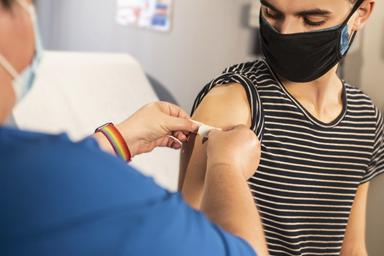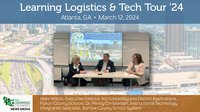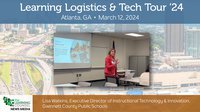Chronic Absenteeism Is a Huge School Problem. Can Data Help? – By Carl Smith, Governing.com
The education losses resulting from pandemic school closures and an unanticipated shift to remote learning have slowed academic achievement. But no matter what resources or strategies are devised to make up for learning setbacks and prevent a generational catastrophe, students won’t benefit unless they show up.
Chronic absence, already a significant problem before the pandemic, reached new levels in the last year. One in four American students were chronically missing in 2020, up from the previous rate of one in six. In some school districts, the rate reached as high as 40 percent.
The student populations buffeted by the health, economic and social consequences of COVID-19 were already more likely to miss days before schools were forced to close their doors. An analysis of 2017-2018 attendance data from 91,000 schools found a chronic absenteeism rate of 17 percent for Hispanic students, 23 percent for Black students, 23 percent for those with disabilities and 29 percent for Native American students.
Chronic absence, defined as missing 10 percent or more of the academic year, has emerged as the most significant barrier to student success and educational equity. It might seem obvious that students who miss days at school learn less, but the problem was not studied in depth, or given a name, until early in this century.
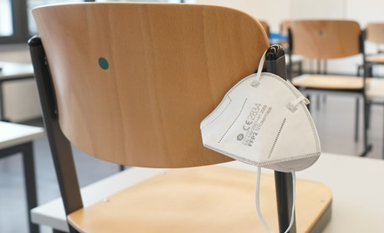
Nevada district agrees to pursue online academy for next school year; 'We would just love to keep our kids with us' – By Phillip Sitter, Ames Tribune
The Nevada Community School District is seeking state approval to offer an online academy in the fall through a provider that some of its students are already familiar with.
The district's plan is to offer a virtual learning academy through Edmentum EdOptions — through which high school students in the district have been able to access virtual course options for the past several years, said Kody Asmus, Nevada's associate superintendent for school improvement.
Asmus presented to Nevada's school board Monday night a plan for Edmentum to also offer programs to the district's students in grades K-8 in the 2021-22 school year.
The board approved for the district to move forward with the plan and seek state approval, which it needs in order to offer open enrollment access to remote learners from outside the district.

L.A. Unified to launch nation’s largest district college savings account program – By Betty Marquez Rosales, EdSource
Los Angeles Unified on Friday plans to launch a student college savings program that will give thousands of first-graders their own college fund.
The program, called Opportunity L.A., is set to become the largest school district college savings program in the nation once it enrolls all first-grade students attending district schools. L.A. Unified, the state’s largest school district and the nation’s second-largest, enrolled over 35,000 first-grade students by the beginning of the current school year. The cost to fund students’ savings accounts during the first year would exceed $666,000, plus administrative, outreach and other related costs.
“The need for programs that take direct aim at closing opportunity gaps for our kids has never been greater, and we’re excited to lead the way here in Los Angeles,” said L.A. Unified board member Nick Melvoin, who has been in support of the program since it was first introduced to the board. The program is the result of a years-long collaboration between the school district, the city of Los Angeles and Los Angeles County.
The first deposits will be made in June for more than 13,000 first-graders deemed to be in greatest need in 196 of the district’s 1,413 schools. Each will be automatically given $50 in a deposit-only college savings account. This first group of students has been identified based on the district’s Student Equity Needs Index that measures a wide range of student needs by tracking the percentage of students who may need additional support that each school enrolls.
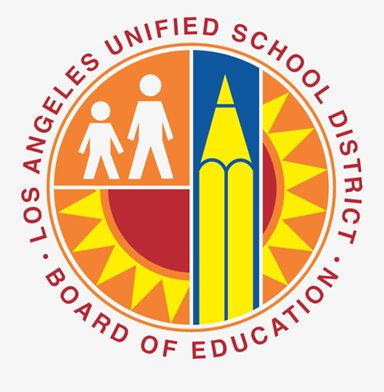
How School Nurses Are Helping Get Vaccine Shots into the Arms of Students – By Emily Tate, EdSurge
The FDA’s decision came on Monday: It would authorize emergency use of the Pfizer-BioNTech vaccine in 12- to 15-year-olds. Two days later, the Centers for Disease Control and Prevention followed suit, recommending that adolescents—the youngest population yet—begin receiving the COVID-19 vaccine.
By Thursday morning, less than 24 hours after the CDC’s endorsement, the nurses at Mt. Lebanon School District were inoculating middle schoolers, watching them wriggle with anticipation, calming them as they winced at the needles and then celebrating the momentous occasion with them.
At the day’s end—in five hours, to be precise—about 10 nurses had helped administer nearly 1,000 doses of the Pfizer vaccine to students, averaging about four kids a minute. They had perfected the process, problem-solving every hiccup, after months of practice administering the vaccine to adults in the community, including school staff. It’s what allowed them to turn the vaccine clinic around so quickly after the CDC’s announcement. (Well, that and their newfound ability to transition from in-person to remote learning at a moment’s notice.)
“The kids were ecstatic,” says Deanna Hess, chairman of health services at the Pittsburgh-area school district. “They’re just so excited to get back to that normalcy—whatever normalcy is for them.”
